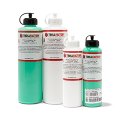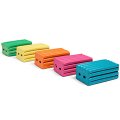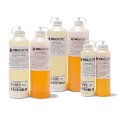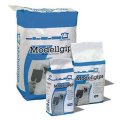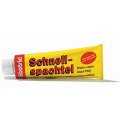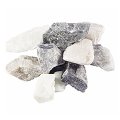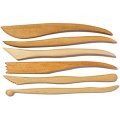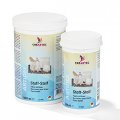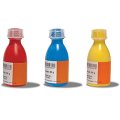PUR liquid resins
Information on polyurethane casting resins
Among the group of two-component substances, polyurethane casting resins are the easiest to work with. They can be quickly and easily mixed and, by virtue of their usually low viscosity, can be poured into even very intricate moulds. Among the polyurethane casting resins are ones that have short working times and short de-moulding times: these are commonly referred to as quick casting resins. Shrinkage during the curing of PUR casting resins is negligible (< 0.5 %).
Polyurethane is the result of an exothermic reaction between the polyol based component (as a rule, resin) and the isocyanate based hardener. The components containing the isocyanate (sometimes that is also the resin) are very sensitive to water. The cured resins are usually not UV resistant unless the appropriate additives have been added (for example, our transparent PUR casting resins 1770/330 and 1784/330). They are resistant to heat up to the point of charring and can, as a consequence, not be welded to one another through heating.
The PUR resins are grouped under the elastomers or the duroplasts depending on their make-up and the resulting physical and mechanical attributes attained after curing. As an elastomer, they remain elastic plastics that can be expanded through pressure and which, by means of vulcanization, can be affixed to one another.
The designation "Sh-A" or, alternatively, "Sh-D" stands for Shore Hardness, which is a scale of hardness for elastomers and plastics. In the case of softer, rubber type materials, the A scale is used, while for harder materials the D scale. The test procedure, which is standardized per DIN 53505 and DIN 7868 (German Industry Norm), consists of a tempered steel indenter, whose shape varies for the A and D scale tests, being pressed into a material with a specific force whereby the amount of penetration is measured. The measuring scale goes from 0 (complete penetration) to 100 (no penetration) - the higher the number, the harder the substance.)
Because most of them have very good mechanical attributes as well as an appreciably longer service life when used for reproductions employing aggressive media, elastic polyurethane is also used as a material for moulds in the place of similarly priced silicone. Moulds made with PUR resins are only considered for use when making solid forms (a casting process) because the Shore Hardness necessary for de-moulding a shape with only an outer layer cannot be achieved with PUR resins. When making moulds with elastic polyurethane, this fact must be taken into account: the resins containing isocyanate and the high temperatures produced during the curing process can both cause damage to the master form. Because polyurethane does not possess the self-releasing characteristics of silicone, a release agent must definitely be used.
Storage and Shelf Life: Polyurethane resins should be stored in closed containers at temperatures between 15 °C and 25 °C. Packages that have already been opened must be immediately resealed in a moisture proof manner and reused as soon as possible. If already stored for a longer period of time, it is imperative that both components be vigorously shaken before being mixed together. Components that have crystallized as a result of improper storage can be decrystallized by means of careful short term heating up to a maximum of 70 °C - after which they should be allowed to return to room temperature before working with them.
Safety at work: The hardener components of the PUR casting resins (sometimes the resin too) contain isocyanate (MDI). As a result, they can irritate skin, eyes and breathing passages as well as cause allergic reactions. People with hypersensitivities (asthma, chronic bronchitis) are advised against using PUR casting resins.
If the mixed resin or its components should happen to be swallowed or land in an eye (wear protective goggles!), a doctor should immediately be consulted and the eyes should be thoroughly washed out with cold water (10 to 15 minutes). Accidental splatters on the skin should be wiped away and the area cleaned with soap and water. Good ventilation should be provided for and an open fire should be avoided. When still in a fluid, not completely cured state, the components can be hazardous to water and should therefore not be allowed to enter into drains or soils.
Please take note of the dangers and the safety information on the package and the information titled “Safety at the Workplace” found under “Casting Resins”. We will be glad to send you safety data sheets upon request.
Treatment: All the PUR casting resins that we have on offer can be worked with at temperatures between 18 °C and 25 °C. Before use, the components, which often contain fillers, must be thoroughly homogenized by means of vigorous shaking – especially after a long time in storage. The package should subsequently be allowed to stand for a few hours so that any air bubbles that may have been produced by the shaking will have time to escape. In order to avoid having the moisture sensitive material react with the humidity in the air, a partially used package must be immediately closed and moisture proof resealed. The conditions when working with the material must also be dry and care should be taken that the surfaces of the moulds should be dry as well. When this casting resin is indeed contaminated with water it will foam up – an effect that can be useful in the case of adhesives but very undesirable in the case of casting work.
Most PUR casting resins can be filled with various types of filler. Fillers are used for wall thicknesses from about 25 mm in order to achieve the following:
- lessen the amount of shrinkage,
- save money,
- reduce the weight of the cast piece,
- to change the working attributes of the material (putties),
- to influence the final attributes or the appearance of the material,
- to reduce the reaction temperatures and thereby the working life during the casting of large pieces.
The mixing ratios between the already mixed casting resin mixture and the filler depends on the type of filler being used and the desired attributes you want to achieve. A PUR quick casting resin which has a mixing ratio of 1:1 (e.g. G26) lends itself to the following mix preparation: 1 kg resin to 1kg hardener with 2 to 3 kg filler. When adding the filler, one half should be stirred into the resin component and the other into the hardener (start with the component that does not contain the isocyanate – that component should be kept closed for as long as possible).
Both (now filled) components should then be quickly but thoroughly mixed together according to the given mixing ratio. Moulds that are made from non-releasing materials must definitely be treated with a release agent beforehand.
Cured duroplastic PUR casting resins usually take well to being machine worked. After removing the release agent, they can be primed and painted. This should always be done if the poured object is to be used outdoors because PUR resins, although weather resistant, are not UV resistant.
